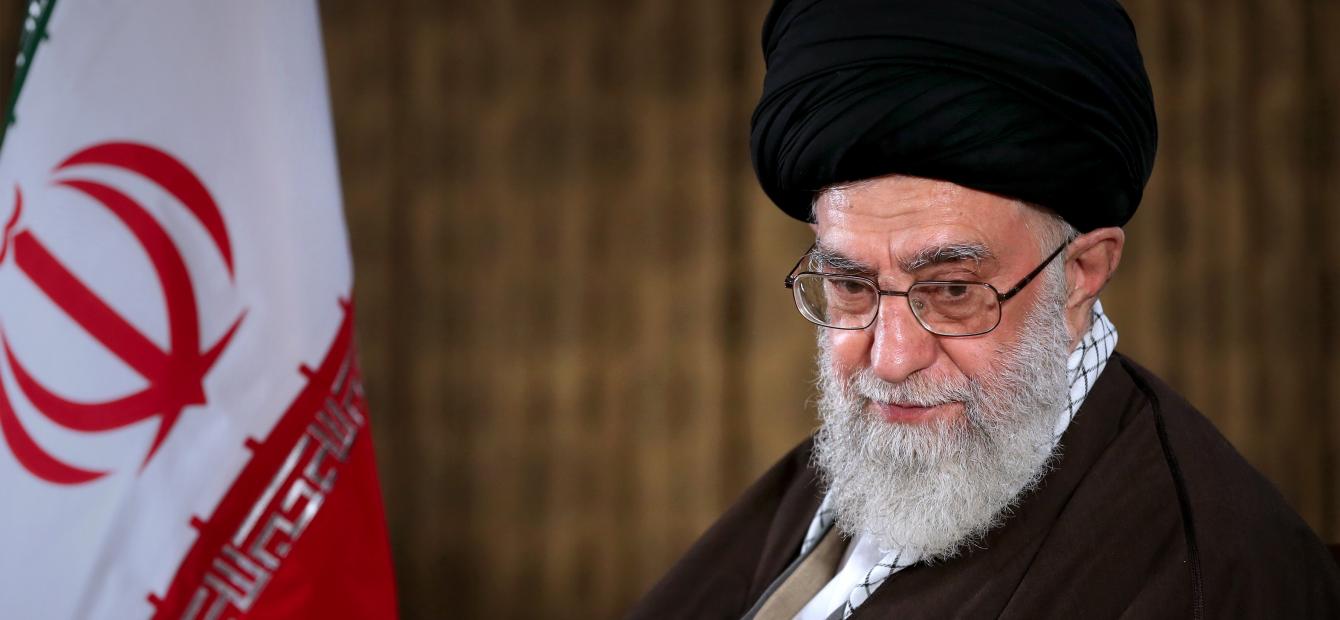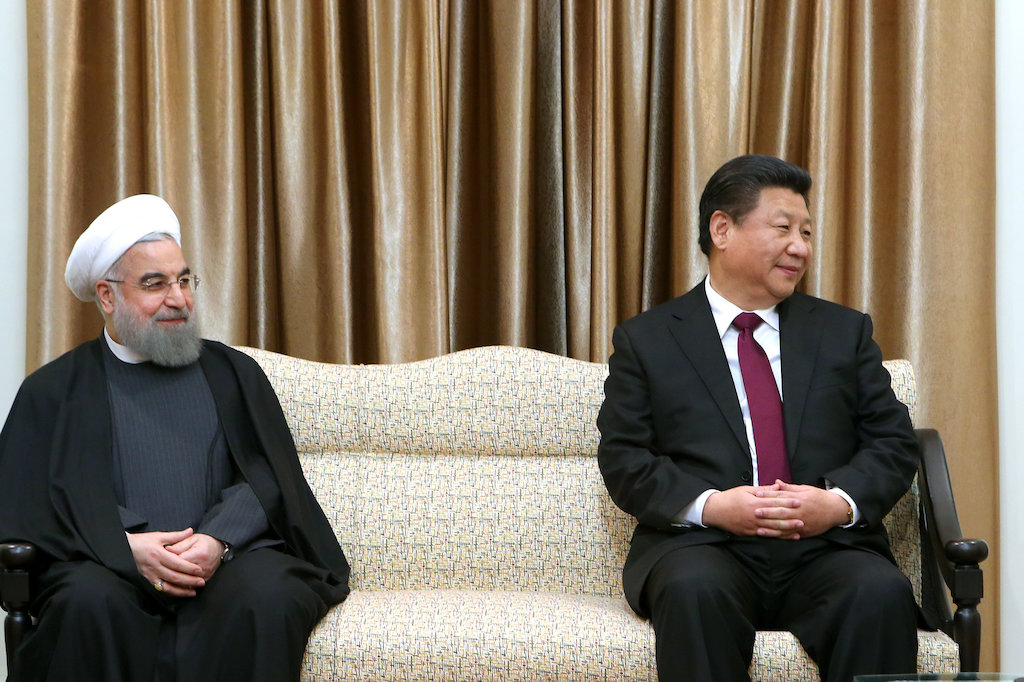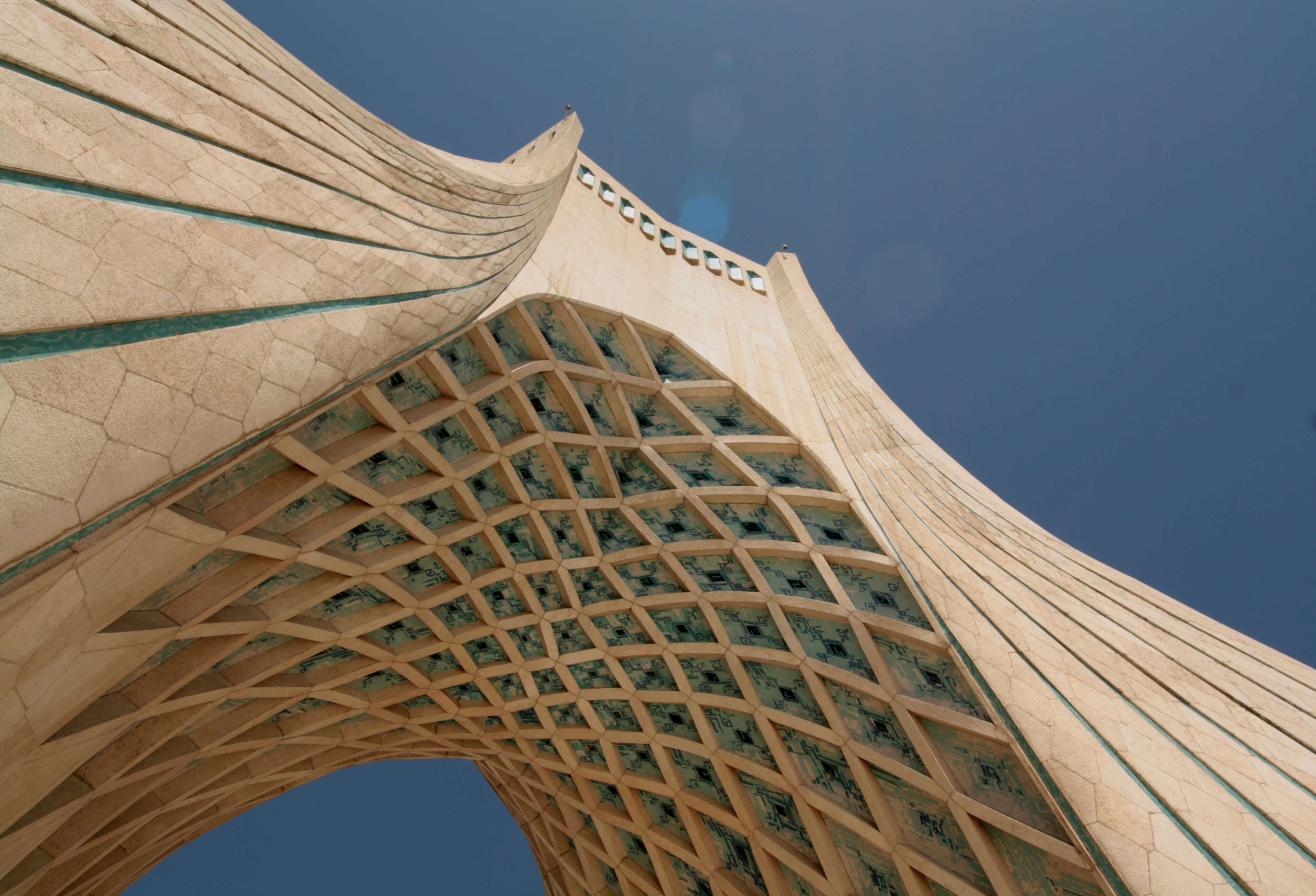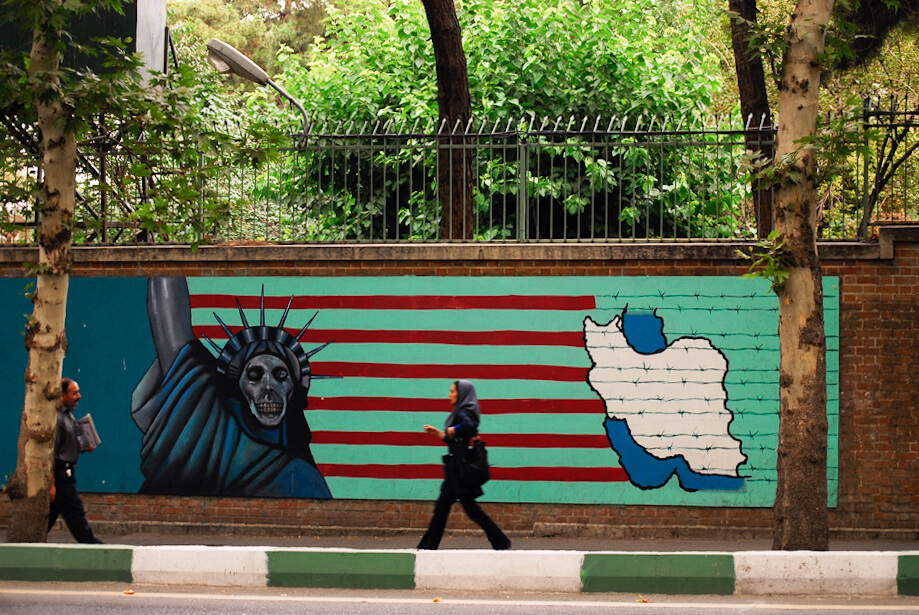
Unequal Love - Iran Looks East for Help; Does China Answer?
Distrust of the Cold War superpowers sparked affection between China and Iran. While Tehran – facing a crisis – still gazes East today, Beijing’s commitment has faded.1
“It is yet undetermined where the virus originated”, said Zhao Lijian, a prominent spokesman for China's Ministry of Foreign Affairs in early March.2 “It might be the US army who brought the epidemic to Wuhan!”, he continued on Twitter.
Few outside China repeated this conspiracy theory. Except for Ali Khamenei, supreme leader of the Islamic Republic of Iran.
On March 22, Khamenei firmly declined an American offer to provide humanitarian aid. “You are accused of having created this virus”, he threw at the feet of the US government. “You could be giving medicines that spread the virus or cause it to remain.”3

Whether the leadership in Tehran really believes that COVID-19 originated in the United States remains unclear. It is also uncertain how seriously they took the outbreak in China. On January 31, the Iranian government announced – just two days after British Airways – its decision to suspend all flights to and from China. A member of Iran’s parliament, however, complained on February 4 that airlines had continued their flights.4
Radio Farda, a US-funded radio station operating from abroad, reported that the Iranian airline Mahan Air operated 55 return flights between four Chinese cities and Iran between February 4 and 22.5 The airline objected that these flights were only used for the delivery of humanitarian goods. With over 90.000 reported infections and 5877 deaths as of April 28, Iran is among the worst affected countries.
Iran’s isolated regime is careful not to estrange its only friend of geopolitical significance
It would have been better for Iran if it had already curtailed traffic with China in January. However, Beijing disapproved when countries (the US in the lead) began closing their borders with China in early February – labelling these decisions “an overreaction”.6 When an Iranian health ministry spokesperson called China’s COVID-19 figures “a bitter joke” in April, he was immediately reprimanded by both the Chinese ambassador and hardliners in Tehran.7 Iran’s isolated regime is careful not to estrange its only friend of geopolitical significance.
An anti-superpower friend in need
Since the proclamation of the Islamic Republic, the love affair between Beijing and Tehran has been mainly based on shared trauma and common enemies. However, the relationship has an unequal character: the more isolated Iran is, the less China has to take its wishes into account.
The Iran-Iraq War was such a period of isolation. In the chaotic aftermath of the revolution and the founding of the Islamic Republic, Iraqi leader Saddam Hussein invaded an internally divided Iran in 1980. Under its new ‘supreme leader’ Ayatollah Khomeini, who – unusual for the Cold War period – rejected both superpowers, Iran fought a long and bloody protracted conflict. It was in urgent need of friends.
At about the same time, after the death of Mao Zedong, the People’s Republic of China awoke from its revolutionary psychosis: The Cultural Revolution. The country’s new leader Deng Xiaoping, like Khomeini, feared both Moscow and Washington. China had become estranged from the Soviet Union after Stalin’s death and was still suspicious of the US despite Deng’s successful visit to President Carter in 1979. China became a rare partner in Iran’s time of need.

That made sense. China was the only significant player who had no legacy of colonial domination of Iran (such as Britain and the Soviet Union), had not instigated a coup in Iran (such as the United States and Britain), and was not outspokenly pro-Iraq (such as France and the Soviet Union).
In fact, Beijing’s view of the world is also strongly coloured by the humiliations of colonialism and clashes with the nineteenth-century European Great Powers. In the eight-year Iran-Iraq war, China therefore became by far Iran’s main arms supplier. The downside? Beijing sold twice as many weapons to Iraq.8
Negotiating the Iran nuclear deal
When President Obama isolated Iran to compel the regime to end its nuclear program, Beijing again played an ambiguous role. In the first one and a half decade of the 21st century, Iran served as a vast protected area in the Middle East for China. Unlike in its relations with Baghdad, Riyadh and the governments of the other Gulf States, Beijing does not have to fear interference from the United States in its trade with Iran. After all, the US has not had diplomatic ties with Iran since 1980.
Beijing hoped to make Iran, the most populous country in the Middle East, a permanent hub for Chinese trade
Trade grew rapidly; the metro network in Tehran was constructed by China, Iranian shops are full of Chinese imports, and Chinese state-owned companies exclusively had the opportunity to develop Iran’s energy fields whenever Iran was sanctioned by the West.9 Beijing hoped to make Iran, the most populous country in the Middle East, a permanent hub for Chinese trade.
China, hence, provided the Ayatollahs of Tehran with the lifeline that kept them afloat during US and European sanctions. Where European countries suspended their oil imports from Iran, China still consumed more than half a million barrels per day in 2014.10 In addition, China’s seat on the Security Council served as a shield against even more severe UN sanctions and condemnation for Iran. During this period, Tehran officially enacted a ‘look East policy’.
Yet, during the nuclear negotiations, China’s affection once again proved limited. Beijing supported multiple UN resolutions condemning the leadership in Tehran, reduced oil imports from Iran and simultaneously imported twice as much oil from Saudi Arabia – Iran’s new nemesis.9
How is that possible? Developing its economy was in the 2000s and early-2010s still the main aim of China’s leaders. To achieve this, it had to be seen as a responsible stakeholder in the American-led world order. The US was important to China. The Sino-American trade relationship in dollar volume in 2014 was ten times greater than the Sino-Iranian.11 Unlimited political support for Iran would put pressure on relations with the US.
Iran's nuclear deal; China's belt and road
Iran gained greater leverage in its relationship with China due to the nuclear deal and the Belt and Road Initiative. After the implementation of the nuclear agreement, non-Chinese oil giants were also eager to exploit the Iranian energy market.12
In the first seven months of 2017, oil exports to the European Union skyrocketed to around almost three-quarter of a million barrels per day in April.13
First, China had a monopoly over the development of Iran’s energy fields, but now it had to compete with Japanese and French parties.14 At the same time, Russia took over all arms exports to Iran from China.8
In China’s Belt and Road Initiative, Iran is the essential land area connecting East to West
The Belt and Road Initiative also offered new perspectives to Iran. Xi Jinping’s gigantic prestige project aims to connect China to Europe via the Middle East and Central Asia. Sandwiched between the Caspian Sea in the north and the Persian Gulf in the south, Iran is the essential land area connecting East to West.
Accordingly, Xi did not waste any time after the nuclear deal came into force. He flew directly to the Middle East and landed in Tehran after visits to Riyadh and Cairo. President Rouhani pledged enthusiastic participation in the Belt and Road Initiative and announced that the two countries would increase trade to $600 billion in the next decade.15
Foreign Minister Javad Zarif summed-up Iran’s optimism in a speech at Peking University. After the fall of the Berlin Wall, he said, the world had experienced not the ‘end of history’ but international misery. With US hegemony coming to an end, a transition phase had commenced that would be characterized by ‘win-win cooperation’ between countries in which they could act with greater freedom.
Xi’s Belt and Road Initiative, Zarif said, was an important example of this.16 Excitement took hold in Tehran. President Rouhani, who championed the deal, received an overwhelming mandate after his re-election campaign in early 2017. Iran was ready to do business with the whole world. An excellent opportunity to develop relations with China on a more equal footing.
Maximum pressure
Then Trump came along. By unilaterally terminating American participation in the nuclear deal and through his campaign of ‘maximum pressure’, through US sanctions, President Trump has achieved Iran’s ultimate isolation. European oil giants were quick to halt imports from Iran and abandon development projects in Iran’s energy fields.
China had reason enough to thwart Trump’s Iran policy because of the trade war the United States initiated. In addition, China’s thirst for oil peaked in 2019. However, even Chinese state-owned enterprises were unable – or unwilling – to fight the sanctions.
Between 2018 and 2019, nearly three-quarters of Iran’s oil exports evaporated. China’s imports of Iranian oil also fell to an unprecedented low level.17 And in December 2018, the Chinese National Petroleum Corporation abandoned the development of the South-Pars gas field, a project the French firm Total had left previously.12

Why did Beijing not resist Trump’s maximum pressure campaign more strongly? In addition to fear in Beijing to further endanger its extensive trade relations with the United States, one explanation is that Iran’s enemies in the Gulf also enthusiastically participate in China’s Belt and Road Initiative.
As Iranian oil exports to China fell, the amount of oil China bought from Riyadh reached record highs. Not only Saudi Arabia enjoys China’s appetite for energy: a total of two-fifths of all oil imported by China is supplied by the Arab Gulf States and Iraq.18
Beijing’s relationship with the Gulf Kingdoms is more comprehensive than energy trade. Chinese parties have invested over 120 billion dollars in the Middle East since 2013.19 Chinese workers also came with that trade. Today, hundreds of thousands of Chinese expats live all over the Gulf. More than 200.000 of its nationals live in the United Arab Emirates alone.20
Another explanation is Beijing’s straightforward interest in de-escalating any conflict in the Persian Gulf. Three times throughout the last ten months Tehran seriously collided with the Americans or their allies: in the summer of 2019, Iran hijacked a British-flagged tanker; in September 2019, a Tehran-backed rebel movement from Yemen (or Iran itself) launched a drone attack on Saudi Aramco’s oil production facilities; and in early 2020, President Trump killed Iranian General Qassem Soeleimani with a drone strike. Beijing’s response to all three events was mild – as it called for “restraint” and “calm”.21
After the second confrontation, oil prices skyrocketed by nearly 20 percent, with China reportedly paying nearly $100 million more per day for its energy imports.22
The message that Foreign Minister Zarif received during his visits to Beijing last year will have been clear: “Yes, the Americans are deeply unreasonable, but keep quiet and live up to your obligations under the nuclear agreement.” Xi Jinping, facing rapidly declining growth at home, the trade war with the US and growing Chinese scepticism within the EU, is in no need for another crisis abroad.
Lovers estranged
The regime in Tehran, isolated by the US, given up on by Europe and not China’s priority, is under immense strain. According to the IMF, the Iranian economy shrank by nearly one-tenth in 2019.23
In November 2019, mass protests broke out during which security forces shot dead hundreds of protesters.24
Add to that the recent oil price collapse – and thus another reduction of Iran’s leftover income – and you have an all-out crisis.
Under these circumstances, the Iranian government is now fighting one of the most severe outbreaks of COVID-19. In March, 85.000 prisoners were released temporarily in an emergency attempt to inhibit the spread of the virus. However, this will not stop the ongoing humanitarian tragedy.
Iran’s relations with China are meanwhile growing further out of balance. The longer Beijing expands its relationship with Iran's enemies and the greater China's interest in a stable supply of energy from the Persian Gulf, the less it will tolerate Iranian escalation of the conflict to escape the American chokehold.
Today, the Gulf States and China are rapidly building a shared future within the confines of the Belt and Road Initiative. Enthusiastic Iranian support for anti-American conspiracy theories does nothing to change that.
- 1Een Nederlandstalige versie van deze analyse verscheen eerder bij de Groene Amsterdammer
- 2‘Foreign Ministry Spokesperson Zhao Lijian's Regular Press Conference’, March 5, 2020.
- 3Khamenei on Twitter.
- 4Maysam Bahravesh, ‘Iran botched the coronavirus pandemic’, Foreign Policy, March 24, 2020.
- 5Maryam Sinaiee, ‘What spurs Iran’s Mahan Air to continue flights to China despite public outrage?’ Radio Farda, March 13, 2020.
- 6‘Foreign Ministry Spokesperson Hua Chunying's Daily Briefing Online’, Ministry of Foreign Affairs of the People’s Republic of China, February 3, 2020.
- 7Maryam Sinaiee, ‘Iran guards censure health officer for criticizing China’s coronavirus data’, Radio Farda, April 8, 2020.
- 8 a b See Databases of the Stockholm International Peace Research Institute.
- 9 a b Joris Teer and Suolao Wang, ‘Sino-Iranian asymmetrical interdependence in light of the Iran nuclear issue’, Asian Journal of Middle Eastern and Islamic Studies vol. 12, 2018, p. 10.
- 10‘Under sanctions, Iran’s crude oil exports have nearly halved in three years’, U.S. Energy Information Administration, June 24, 2015.
- 11‘U.S.-China trade facts’, Executive Office of the President.
- 12 a b Teer and Wang, p. 16.
- 13‘Europe receiving 40% of Iran’s crude oil shipments’, Financial Tribune, December 3, 2017.
- 14Teer and Wang, p. 10.
- 15‘Iran, China agree to increase trade ties to $600b in ten years’, Tehran Times, January 24, 2016.
- 16‘Foreign Minister of the Islamic Republic of Iran Speaks at Peking University’, Office of International Relations, December 6, 2016.
- 17Esfandyar Batmanghelidj on Twitter.
- 18‘Top 15 crude oil suppliers to China’, World’s Top Exports, April 26, 2020.
- 19‘After Aramco attacks, China’s Middle East interests are at stake’, Atlantic Council.
- 20‘United Arab Emirates population statistics’, GMI, March 12, 2020.
- 21See for example: Ben Blanchard, ‘China says nobody wants war after tanker attacks in Gulf of Oman’, Reuters, June 14, 2019.
- 22Chriss Street, ‘China losing $97 million a day due to attacks on Saudi Arabia oil facilities’, The Epoch Times, September 18, 2019.
- 23‘Iran economy to shrink 9.5% this year amid tighter U.S. sanctions, says IMF’, Reuters, October 15, 2019.
- 24‘Iran: Thousands arbitrarily detained and at risk of torture in chilling post-protest crackdown’, Amnesty International, December 16, 2019.




0 Reacties
Reactie toevoegen